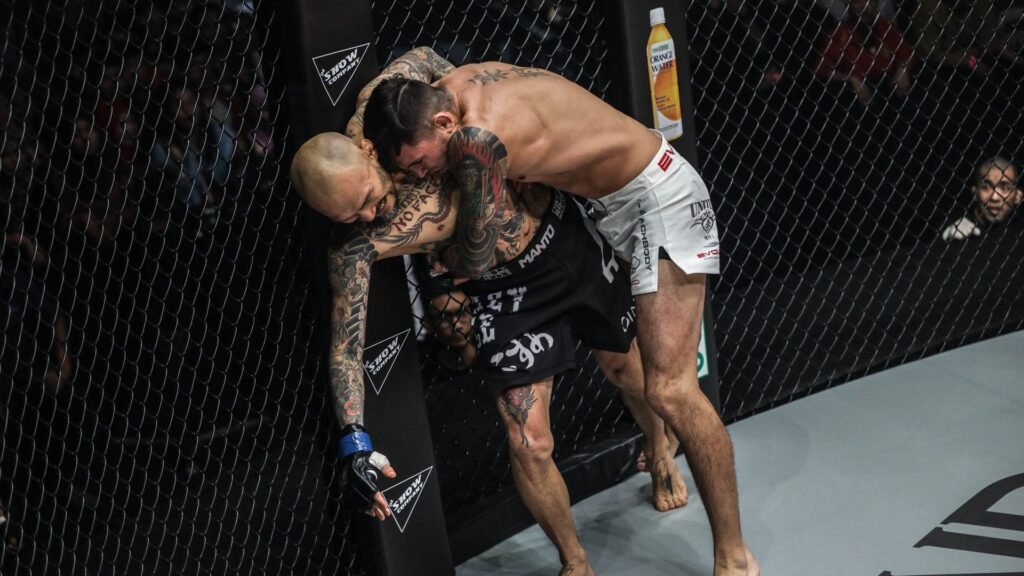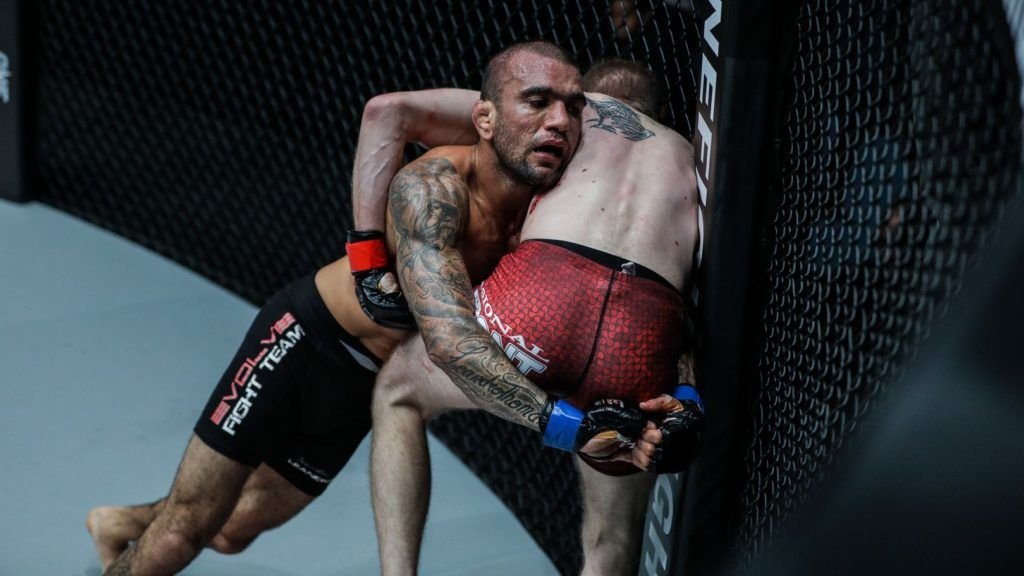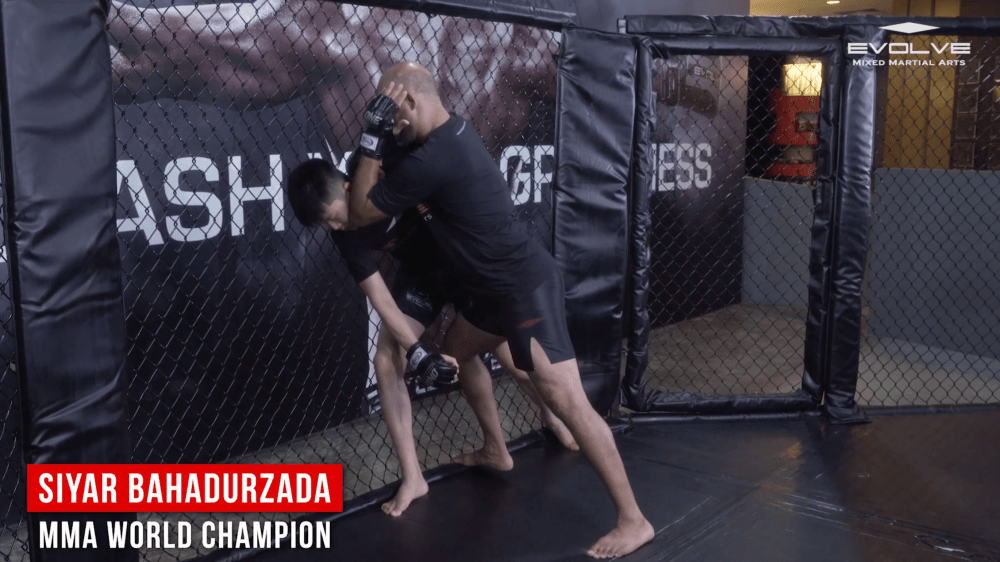In the world of MMA, mastering cage control is key to gaining an advantage over your opponent. Whether you’re a seasoned fighter or just starting out, understanding the best techniques to utilize this strategy can greatly improve your chances of success inside the octagon. In this article, we will explore the most effective ways to use cage control to your advantage, allowing you to dictate the flow of the fight and increase your chances of victory. So, get ready to take your MMA skills to the next level with these expert tips on cage control!

Understanding Cage Control
Cage control in MMA refers to the strategic positioning and movement of a fighter in relation to the octagon cage. It involves utilizing footwork, clinching techniques, striking, and grappling to gain an advantage over the opponent. Understanding cage control is crucial for any MMA fighter, as it allows them to dictate the pace of the fight, limit their opponent’s options, and create opportunities for offense or defense.
Defining Cage Control
Cage control can be defined as the ability to dominate the positioning and dictate the movement of the fight within the confines of the octagon cage. By strategically maneuvering around the cage, a fighter can limit the space and options available to their opponent. This can force the opponent into uncomfortable positions, make it difficult for them to execute their game plan, and create openings for the fighter to launch their own attacks.

Importance of Cage Control
Cage control is of utmost importance in MMA for several reasons. Firstly, by maintaining control of the cage, a fighter can effectively control the distance between themselves and their opponent. This allows them to stay in their preferred striking range or avoid being taken down by a grappler. Additionally, being the one in control of the cage also means having better offensive and defensive options. The ability to dictate the pace of the fight and create openings can significantly increase the chances of success for a fighter.
Footwork and Positioning
Maintaining Octagon Control
Maintaining octagon control requires a fighter to constantly move and position themselves strategically within the cage. This involves utilizing proper footwork techniques, such as circling, pivoting, and side-stepping, to control the center of the cage. By staying in the center, a fighter can limit their opponent’s movement options and force them to engage on their terms.
Cutting Off Angles
Cutting off angles is another crucial aspect of cage control. By anticipating the opponent’s movement and cutting off their escape routes, a fighter can effectively trap their opponent against the cage. This restricts their options and puts them at a disadvantageous position, making it easier for the controlling fighter to launch their attacks or initiate a clinch.
Utilizing Strafing Movements
Utilizing strafing movements involves moving laterally along the cage while facing the opponent. This can be an effective technique to maintain control and prevent the opponent from circling away or escaping. By constantly adjusting their position and keeping their eyes on the opponent, a fighter can react quickly and effectively to any movement and maintain cage control.

Clinching Techniques
Achieving the Double Underhooks
One of the primary clinching techniques used in cage control is achieving the double underhooks position. The double underhooks involve wrapping both arms under the opponent’s arms and securing a firm grip behind their back. This position provides excellent control over the opponent’s upper body and allows the controlling fighter to dictate the direction and pace of the fight.
Utilizing Over-Under Clinch
The over-under clinch is another effective clinching technique used to establish control against the cage. This technique involves securing one arm over the opponent’s shoulder while the other arm controls their waist. The controlling fighter can use this position to control their opponent’s movement, nullify their strikes, and set up takedowns or counterattacks.
Implementing the Thai Plum
The Thai plum, also known as the double collar tie, is a powerful clinching technique commonly used in Muay Thai and MMA. It involves securing a double hand grip on the back of the opponent’s head, controlling their posture, and delivering devastating strikes or knee strikes. The Thai plum can effectively immobilize an opponent against the cage, allowing the controlling fighter to unleash a barrage of strikes or transition to a takedown.
Pressuring Opponents Against the Cage
Closing the Distance
Closing the distance is essential in pressuring opponents against the cage. By utilizing footwork, feints, and level changes, a fighter can effectively close the gap between themselves and their opponent. This puts them in a favorable position to initiate clinching, strikes, or takedowns against the cage.
Forcing Opponent’s Back Against the Cage
Once in close proximity to the opponent, the next step is to force their back against the cage. This can be achieved by utilizing strong forward pressure, angles, and techniques like the collar tie or underhooks. By doing so, the controlling fighter restricts their opponent’s movement and limits their offensive options.
Applying Effective Pressure
Applying effective pressure against the cage involves constantly staying active and maintaining a strong physical presence. This can be done through strikes, grappling, and relentless forward movement. By not allowing the opponent to comfortably establish their rhythm or utilize their techniques, the controlling fighter can wear them down mentally and physically, increasing their chances of success.

Striking and Grappling from the Cage
Utilizing Strikes against a Cage
When in control against the cage, a fighter can utilize strikes to their advantage. The cage acts as a solid barrier, amplifying the impact of strikes. Techniques such as knees, elbows, and dirty boxing can be effectively used to inflict damage, disrupt the opponent’s offense, and create openings for further attacks.
Taking Advantage of Leverage in Grappling
The cage can be an invaluable tool for grappling as well. By using the cage as leverage, a fighter can secure takedowns, maintain top position, or prevent their opponent from escaping certain submissions. The grip on the cage, combined with proper technique, can greatly enhance a fighter’s grappling prowess, making it harder for their opponent to defend or escape.
Executing Takedowns and Defense
The cage provides opportunities for executing takedowns with a higher chance of success. By utilizing the cage as a barrier, a fighter can limit their opponent’s movement and take advantage of their compromised balance. Additionally, the cage can also serve as a defensive tool by preventing an opponent’s takedown attempts or providing a surface to push off from to create distance and regain a standing position.
Creating Opportunities for Transitions
Setting Up Strikes to Create Openings
Effective cage control allows a fighter to set up strikes that create openings for transitions. By feinting strikes or using combinations, a fighter can force their opponents to react, leaving gaps in their defense that can be exploited. These openings can be used to transition to takedowns, clinch positions, or initiate a flurry of strikes.
Timing Transitions and Position Changes
Timing transitions and position changes is crucial for successful cage control. By being aware of the opponent’s movements and timing, a fighter can exploit the gaps in their defense or offensive position. This allows for seamless transitions between striking, clinching, and grappling, keeping the opponent off-balance and unable to effectively counter.
Utilizing Fakes and Feints
Fakes and feints play a significant role in cage control. By utilizing deceptive movements and techniques, a fighter can mislead their opponent and create openings. Faking a strike or a takedown attempt can cause the opponent to react in a certain way, which can be exploited to gain control or launch an unexpected attack.

Defending Against Cage Control
Avoiding Getting Pinned against the Cage
To defend against cage control, a fighter must be proactive in avoiding getting pinned against the cage. This can be achieved by maintaining distance, utilizing footwork and lateral movement, and countering the opponent’s attempts to pressure against the cage. By keeping the fight in the center of the octagon, a fighter can nullify the opponent’s advantages and retain control.
Circle Out and Resetting Position
If a fighter finds themselves against the cage, circling out and resetting the position is crucial. By utilizing footwork and lateral movement, a fighter can create angles and escape from the cage. This allows them to regain control of the fight or initiate their own attacks.
Using the Cage as a Defensive Tool
Using the Cage to Nullify Opponent’s Offense
The cage can be effectively utilized to nullify an opponent’s offense. By pressing the opponent against the cage, a fighter can limit their striking range or takedown options. This forces the opponent to rely on less effective techniques or become more predictable in their attacks, allowing the defending fighter to effectively counter or evade.
Utilizing the Cage for Defense in Grappling
When engaged in grappling exchanges against the cage, a fighter can use the cage for defense. By utilizing the cage to create leverage or prevent takedowns, a fighter can maintain control of their position and mitigate the opponent’s grappling offense. This can allow for better defense, easier escapes, or opportunities to reverse the position.
Training Drills for Cage Control
Footwork and Positioning Drills
In order to improve cage control, specific footwork and positioning drills can be incorporated into training sessions. These drills focus on developing agility, balance, and the ability to quickly adapt to changing positions. Examples of drills include shadowboxing while moving along the cage, practicing lateral movement with a partner, or conducting circular footwork drills around the octagon.
Clinching Techniques and Pummeling Drills
To enhance clinching techniques and pummeling skills, specific drills can be implemented. These drills focus on achieving and maintaining strong clinches, utilizing various techniques such as underhooks, collar ties, or Thai plum. Pummeling drills involve partners engaging in controlled clinch exchanges, working on positioning, and transitioning between clinch techniques.
Cage-Based Sparring
Cage-based sparring is an essential training tool for developing cage control skills. By simulating fight scenarios within the confines of the octagon cage, fighters can practice utilizing footwork, clinching, striking, and grappling techniques specific to cage control. Controlled sparring sessions against resisting opponents allow fighters to refine their strategies, adapt to different situations, and gain confidence in their abilities.
Strategies for Different Fighting Styles
Cage Control for Strikers
For strikers, cage control is crucial to maintain distance, avoid being cornered, and create angles for strikes. Strikers should focus on utilizing footwork, cutting off angles, and utilizing the cage to set up strikes. By understanding the range and timing, strikers can effectively nullify their opponent’s offense and create openings for their own devastating strikes.
Cage Control for Grapplers
For grapplers, cage control is essential to secure takedowns and limit the opponent’s movement. Grapplers should focus on quickly closing the distance, utilizing clinching techniques, and using the cage to their advantage during takedowns and ground control. By trapping their opponents against the cage, grapplers can nullify striking threats and focus on their own ground game.
Hybrid Approaches
Many fighters employ a hybrid approach, combining both striking and grappling techniques. These fighters must adapt their cage control strategies based on the situation and their opponent’s strengths and weaknesses. By seamlessly transitioning between striking and grappling, hybrid fighters can effectively control the cage, exploit their opponent’s vulnerabilities, and maximize their chances of victory.
In conclusion, cage control is a crucial aspect of MMA that can provide a fighter with a significant advantage over their opponent. By understanding and utilizing techniques such as footwork, clinching, striking, and grappling, a fighter can dictate the pace of the fight, limit the opponent’s options, and create opportunities for offense and defense. Through dedicated training, drills, and a strategic approach, fighters can master the art of cage control and enhance their chances of success inside the octagon.
